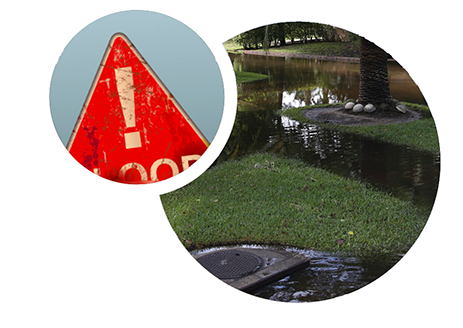
Understanding Flood Alerts
Understanding the different flood alerts can help you prepare for flood events.
Flood Advisory
Be aware! A Flood Advisory is issued when flooding is not expected to be severe enough to issue a watch but it may cause significant inconvenience, and if caution is not exercised, it could lead to situations that may threaten life and/or property. The National Weather Service sometimes issues Advisories independently of Flood Watches or Warnings. They often are issued to specific locations if forecasters see the possibility of localized impacts.
Flood Watch
Be prepared! A Flood Watch means that conditions are favorable for flooding to occur in the designated area. It is a cautionary alert indicating that residents should be prepared and stay informed about weather conditions. Monitor weather updates regularly, know routes to higher ground/shelter and be ready to take action if a Flood Warning is issued.
Flood Warning
Take action! A Flood Warning indicates that flooding is imminent or already occurring in the specified area. It is issued when flooding poses a threat to life and property and immediate action is required. Take prompt action to protect yourself and your property. This may involve moving to higher ground, securing belongings, and following evacuation orders if necessary.
Flash Flood Warning
Take immediate action! A Flash Flood Warning is issued when a flash flood is imminent or occurring. Flash floods are sudden and can happen within minutes or hours of excessive rainfall. Move to higher ground immediately and avoid areas prone to flooding. Avoid driving during flash floods as roads can quickly become impassable.
Flash Flood Emergency
You are in danger! This rare alert is issued when flooding could
cause additional significant impacts. Seek immediate shelter on high
ground. Pull over if you are driving, especially in areas that typically
flood. Wait for conditions to improve.